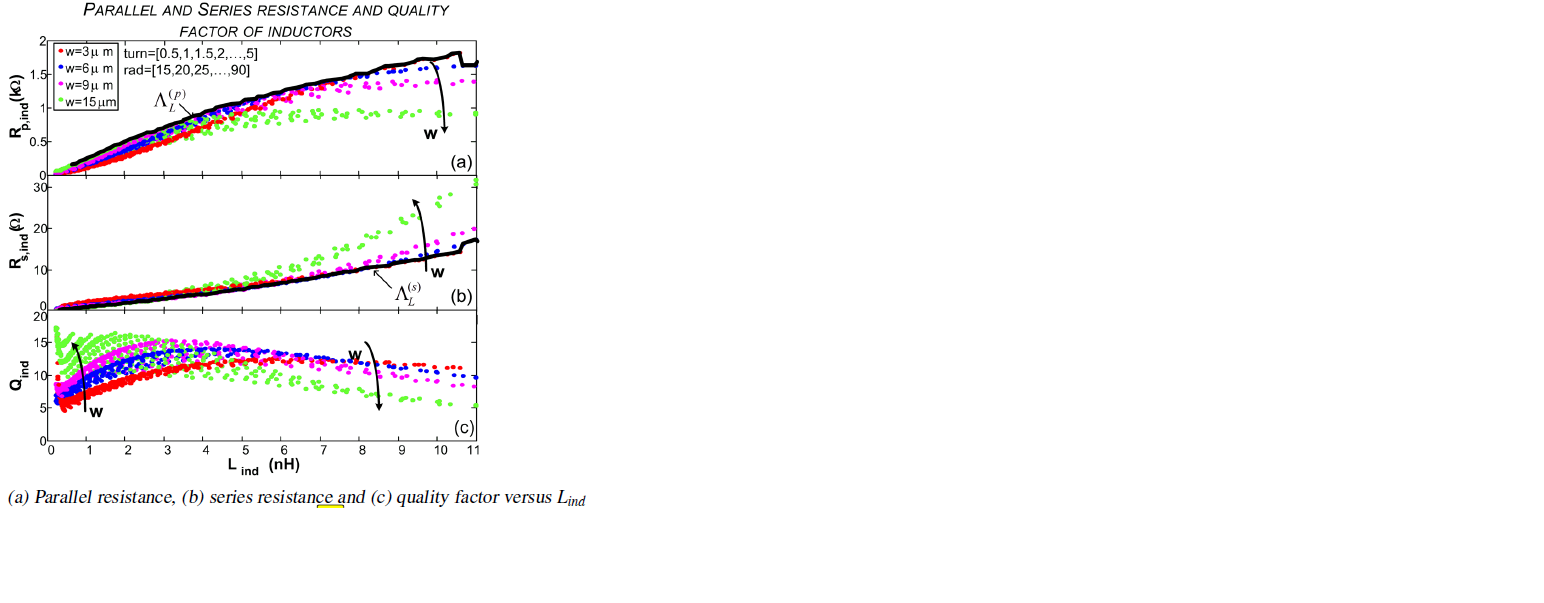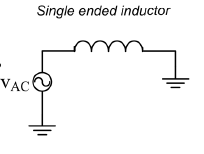How to extract the Resistance and Reactance of a Inductor in Cadence Software?
Giving the geometry, radius, width, and turns, the rough inductance(Lind) and quality factor(Qind) can be computed. This can be viewed from the property of a modelled Ind device (say, spiral_std_mu_z) in a given technology in the Cadence Schematic tool. By sweeping the geometry parameters, one can have the relationship between Qind and Lind like the attached plot (c).

As it is known that the inductor can be modelled in a parallel LC or Series LC network depending on its schematic.
Plot (a) and (b) also show that the Parallel (Rp) and Series Resistance (Rs) of this Ind can also be acquired.
1. I am wondering are there such parameters, Rs and Rp, which can be viewed directly in Cadence (given different geometry values or Lind values) like the Qind (directly from property of the inductor)?
[i.e., How to get or verify the resistance or reactance of a Inductor in Cadence ?]
2. I also did an AC simulation with the test circuit as attached:

I have noticed I can view several resistance via result browser, instance parameter,
rs1_1, rs2_1 rs_3_sub, rx_2_3_sub with r(Ohm) field like, = 2.015.
Not sure if those are more or less related to what I want Rs or Rp.
Thanks,
Alex
From the dimensions and Q curves, I think this is RFIC on Silicon?
If yes, the inductor behaviour is not modelled properly by series RL or parallel RL. Only at one single frequency, and perfectly differential operation with no common mode component, we could describe the series path as equivalent series RL. Very limited and not accurate.
For accurate description over a wide bandwidth you need a more complex model that also includes the shunt path. The shunt path is the reason for the decrease in Q factor at higher freqencies.
http://muehlhaus.com/products/equiva...rfic-inductors
Those plots are from a paper not mine also not sure if they are plotted under RFIC or general one. Even though the modelling may not accurate and do not consider the shunt path you mentioned, still my focus is more on how those Rs and Rp are get extracted. But thank you that you provided something related and I can research more on that.
Regards,
Alex
It makes a big difference because the equivalent circuit models are different.
Difficult to say without knowing what the underlying model is, from which paper. I have worked in inductor modelling for a long time, and parallel resistance doesn't make much sense to me.
Series resistance is simple, from real part of differential Z11. See bottom of the page here (link) for math to convert 2-port data to differential 1-port data.
Cadence ADE is not very proper tool to extract model components of an oinductor or capacitor.
EM simulators will give more deeper insight about them.
For instance latest Sonnet 15.54(16.52) can extract a predefined equivalent model of an inductor after a sucessfull EM simulation.
Reactance Resistance extract 相关文章:
- FM BJT Reactance Modulator (Proof on Oscilscope)
- Adding ports to know resistance at some point in 2-patch antenna
- Microstrip Negative Resistance Oscillator Nyquist plot Encirclement issues
- What is the gate resistance of the LDMOS?
- Calculating Resistance/Capacitance values from measured/simulated S-parameters
- MOSFET Resistance rout and Rds (ON)
